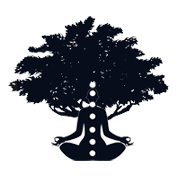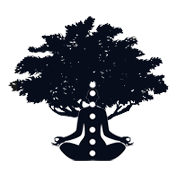Muladhara Chakra
Muladhara consists of two words “Mula,” which means root, and “Adhar,” which means base. The word “Chakra” means wheel. Thus Muladhara chakra is also referred to as the root chakra or base chakra. Because it is the base chakra, the common belief is that it is not worth working upon. In reality, the Muladhara chakra is the foundation of other chakras in the body. The energy emanating from the earth and nature is collected and transformed through it. Understanding and working on this chakra is essential, especially for those looking to awaken Kundalini.
Keyword: -
I exist.
The Muladhara Chakra is closely related to the physiological capacities of the physical or material body. The instinct of survival of the physical body and a sense of physical and mental harmony about satisfying the primary needs, including Food, water, shelter, survival, physical pleasure, and other bodily needs. It plays a more significant role in the activation of the immune system. A balanced Muladhara chakra gives a sense of satisfaction in physical health and well-being, boosting self-confidence and stability.
Position: -
However, the actual position of the Chakra can vary between men and women due to differences in genital organs. Still, we get an idea from the name itself that it exists somewhere at the base of the spine between the genitals and anus, midway between the coccyx and pelvic bone.
The Kundalini, or primordial energy, lies sleeping in the Muladhara Chakra, generating a profound consciousness state. This makes it essential for Yogis to work on and balance the Muladhara Chakra as the first step towards awakening the Kundalini energy.
Geometric Symbol: -
Its geometric symbol is a triangle with a vertex at the bottom enclosed in square emblems of the element of earth. The three sides of the triangle are guarded by the female deities Vama, Jyestha, and Raudri, who are personifications of will, knowledge, and action.

Related Organs: -
- Sense organ is the nose.
- The action organ is the feet, anchored to the earth and, at the same time base of the spine that allows the body to get up.
- Adrenal glands, legs and feet, vertebral column, large intestine, genitals, and nervous system.
Beej Mantra: -
“Lam” is a pronounced Sanskrit letter, making it resonate in the nose. It is the “Beejmantra” of the Goddess Earth.
Signs of Imbalanced Muladhara Chakra: -
- Self Doubt, a sense of insecurity, fear of losing financially.
- Deep Depression, Helplessness.
- Lack of self-confidence due to loss of hope or courage. Poor physical and emotional resistance.
- A feeling of sadness, typically with no apparent cause.
- Sudden outbursts of anger and extreme greed.
- A vengeful character.
- Gross sensuality and lustfulness.
- A sharp decline in energy
- Increased pain and soreness in the lower and middle parts of the body
- Diseases like hemorrhoids, constipation, and sciatica.
- Issues with reproductive organs like inflammation (swelling) of the prostate gland.
- Deposition of sand and stones in kidneys and gall-bladder
- Ulcers and inflammations in intestines, stomach, and liver.
Balanced Muladhara Chakra can help with the following: -
- Strengthen vitality, vigor, and stamina.
- Helps activate Immunity by increasing the resistance to illness.
- Increased physical endurance and capacity for physical work.
- A sense of security and self-confidence.
Ask yourself: -
- Do you not enjoy your work as fun and a fun challenge?
- Are you constantly worried about changing jobs or moving to a new location?
- Are you finding it difficult to overcome fear, social anxiety, anxiety, or depression?
- Are you struggling to eat healthily get enough sleep, and exercise regularly?
- Do you keep thinking all the time, about different ideas but find it difficult to actually take action?
Food and Nutrition: -
- Include vegetables that grow inside ground like beets, carrots, celery, ginger root, garlic, onion, potatoes, leek, radish, turnip, parsnips, shallots, yam in your diet.
- Add ashwagandha and ginger to your diet.
- Red color foods such as strawberries, cherries, tomatoes, red peppers, pomegranate, watermelon.
- Foods rich in protein and iron dark leafy greens, beans, chickpeas, tofu, or nuts and eggs are great sources of grounding proteins and essential minerals.
Fruits | Vegetables |
Cranberries | Beets |
Cherries | Radishes |
Strawberries | Red bell peppers |
Raspberries | Red cabbage |
Pomegranate | Red chard |
Watermelon | Red jalapeno pepper |
Red currants | Red onion |
Red grapes | Tomatoes |
Red plums | Red leaf lettuce |
Guava | Chilli peppers |
Yoga Postures: -
Yoga postures along with the right kind of dietary habits can help balance Muladhara Chakra. The following postures target balancing Muladhara Chakra. It is advisable to fill an earthen lamp with oil or burn incense such as sandalwood, cedarwood, rosewood, patchouli, clove, black pepper, or ginger and recite your chosen mantra before practicing these postures for a few minutes.
Knee to Chest (Apanasana) : -
Apana is Sanskrit for "downward-moving life force" and asana means "pose" or "posture." This posture is helps move toxins downward, through and out of the body. Lie on your back, bend one knee toward your chest and hold it with your arm. As you hold your leg, take a deep breath and imagine your root chakra expanding and warming. Try tightening your grip around your legs a bit while holding this pose. Once one leg is done, do the same with the other leg, and finally grab both legs and bend them towards your chest.

Bridge Pose (Setu Bhandasana) : -
The word Setu Bandha comes from the Sanskrit word “Setu” which means Bridge; and the meaning of Bandha, is Lock or bind. This posture gives strength to back muscles. It calms the brain, reduce the level of anxiety, stress, and depression.
Lie on your back with your knees bent and your arms straight, palms down.
Without lifting your body, start pressing your feet into the ground and imagine the energy of the earth flowing through your feet, making them strong and firm. Keeping your feet firmly planted on the floor, take a deep breath and press your chest up to lift your body. If you've already done yoga, fold your hands under your back and bring your shoulders together. Feel the strong support in your legs and maintain this pose for at least three of her breathing cycles.

Half-Locust and Full Locust (Shalabhasana): -
Shalabhasana is a combination of two Sanskrit words. Shalab and Asana. Sharab means grasshopper or locust and asana means yoga pose. The final position of this pose looks like a grasshopper.
Lie flat on your stomach with your arms and legs straight. Turn your palms up and touch the front of your thighs.
Lift one leg off the floor and take a deep breath into your belly, feeling your root chakra activate. Do the same with the other leg, and when you feel the power come in, lift both legs off the floor to try a full grasshopper pose.

Head-to-Knee Pose (Janus Sirasana) : -
The name Janus Sirasana comes from the Sanskrit words ‘Janu’ meaning ‘knee’, ‘Sirsa’ meaning ‘head’ and ‘asana’ meaning ‘posture’. It helps to release lots of tension around your root chakra. It relieves stress in the muscles from lower back to hamstrings. Sit up straight with your legs out in front of you and your back straight. Take a deep breath and as you exhale, extend your arms forward and straighten your legs. If you aren't flexible enough to reach your feet and your hamstrings are straining too much, don't bend your knees as far as you are comfortable, and hold this pose for at least 30 seconds.

